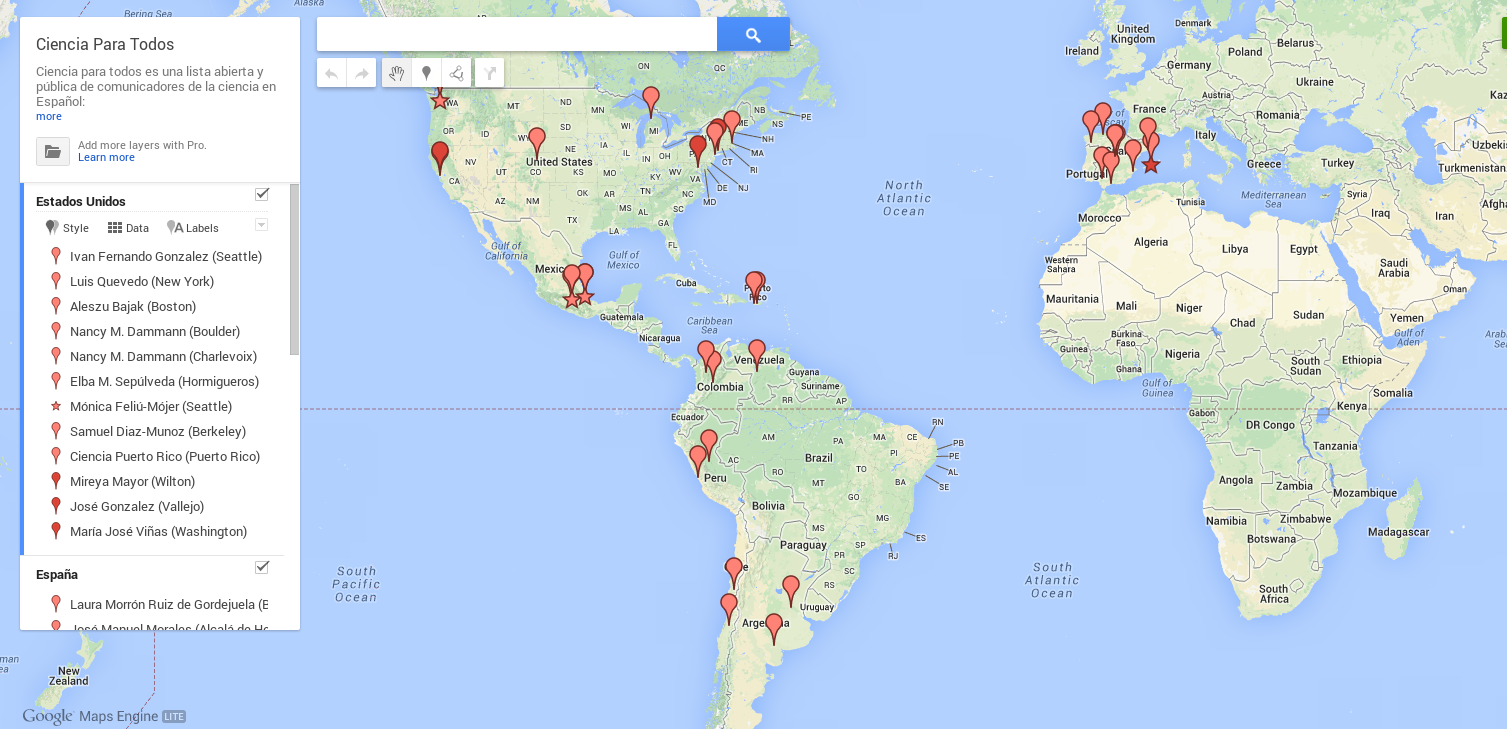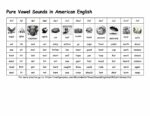 |
 |
 |
 |
 |
 |
 |
Why science communication in Spanish?
The United States is one of the biggest Spanish-speaking nations by population. Spanish was spoken at home by 37 million people in the US –according to the 2010’s Census, a 230% increment since 1980. That makes USA the fifth biggest Spanish speaking country after Mexico, Spain, Colombia and Argentina (1).
52 million Hispanics in the USA are the fastest growing group on the Internet, outpacing the national average by 50% (2). Language represents a strong cultural connection for Hispanics, and 75% of them speak Spanish, a simple fact that needs to be recognized in order to reach them (3). Spanish-dominant and bilingual Hispanics accounted for 54% of the 32 million Hispanics online in 2010 (4), or more than 17 million users; a significant number compared with the 153 million Spanish-speaking Internet users worldwide (5).
The beauty of having Spanish science content online is that borders blur and users from other countries can access it. Spanish-speaking users worldwide are the 3rd biggest group after English-speaking users (537 m.) and Chinese-speaking users (445 m.) (5), but Internet Spanish content is in 5th position after English, Russian, German and Japanese (6). Spanish-speaking users are ready for more content in their language. There is a potential 400-million-people audience waiting for content!
Have you noticed? Science communication in Spanish is already here!
Federal and state agencies (NIH, EPA), professional associations (AIBS, ACS) and educational services (Ventanas al Universo, ED.gov) recognize the reality of an online Spanish-speaking America. But the landscape of science online in Spanish is very fragmented and almost invisible for the English-speaking science online community. We need to better recognize the efforts already made to serve the Spanish-speaking public, so we can foster inclusivity and collaboration in the science online community. The lack of visibility hides science in Spanish content creators not only from the public but from one another. Science online in Spanish has been driven by isolated efforts for too long. It needs to start communicating, collaborating, and growing.
"Ciencia para todos" showcases ongoing efforts to reach the massive Spanish-speaking audiences in the USA (and Globally). As part of this effort, I started a public opt-in list that may help science communicators match local Spanish-speaking communicators (check list here) and a growing public Twitter list with more than 150 resources worldwide in Spanish (here). Search a map with Spanish-speaking communicators near you (here).
If you are a science communicator in Spanish join us here.
Science Online Seattle event on success stories engaging the Spanish-speaking audiences with science, medicine and health content: “Engaging the invisible Americans: Science Communication for Spanish-speaking audiences.” Here is the link to a recap blog post, with the video and Storify of the event.
If you are looking for a science communicator in Spanish, please browse this map:

(In some cases to see map you may need to login in your Google account)
Thank you!
References:
(1) List of Spanish-speaking Countries by Population http://www.spanishlinguist.com/extra/spanish_speaking_countries_world_figures_and_map.html
(2) U.S. Hispanic Internet Audience Growth Outpaces Total U.S. Online Population by 50 Percent http://www.comscore.com/Insights/Press_Releases/2009/4/U.S._Hispanic_Internet_Audience_Growth
(3) U.S. Latinos Online: a driving force IAB Hispanic Research Working Group. http://www.iab.net/media/file/USLatinosOnline_RevisedMay2011FINAL.pdf
(4) Source: AOL Hispanic CyberStudy ’10 Conducted By Cheskin Research. (original not available) http://www.iab.net/media/file/USLatinosOnline_RevisedMay2011FINAL.pdf
(5) INTERNET WORLD USERS BY LANGUAGE Top 10 Languages (Miniwatts marketing group) http://www.internetworldstats.com/stats7.htm
(6) Usage of content languages for websites http://w3techs.com/technologies/overview/content_language/all
Ciencia Para Todos list in Twitter (Spanish) “Más ciencia en tu idioma, en 140 letras o menos:”




